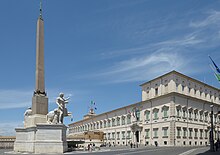Contents
This article needs additional citations for verification .(March 2015) |
| |||
|---|---|---|---|
| Buildings and structures +... | |||
| 1570s .1580s in architecture. 1590s |
| other events: 1580s. Architecture timeline |
This article needs additional citations for verification .(March 2015) |
| |||
|---|---|---|---|
| Buildings and structures +... | |||
| 1570s .1580s in architecture. 1590s |
| other events: 1580s. Architecture timeline |


